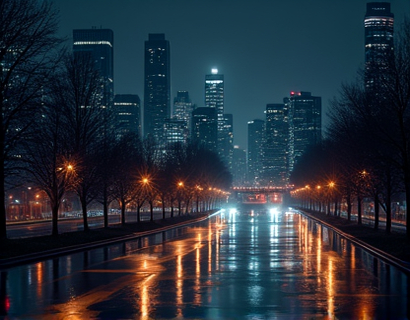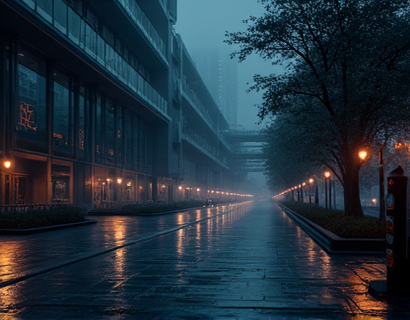Exploring the Ancient Indus Valley: A Comprehensive Travel Guide for Cultural Enthusiasts and Historians
The Indus Valley, a cradle of one of the world's oldest civilizations, beckons travelers and cultural enthusiasts with its rich tapestry of history, architecture, and culture. This travel guide offers an in-depth exploration of the region, providing valuable insights into its historical landmarks, practical travel tips, and hidden gems that will enrich any journey through this timeless land.
Historical Background of the Indus Valley Civilization
The Indus Valley Civilization, also known as the Harappan Civilization, flourished around 3300 to 1300 BCE. It was one of the earliest urban civilizations, alongside those of Mesopotamia and Egypt. The civilization was centered around the Indus River and its tributaries, spanning parts of present-day Pakistan and northwestern India. The cities of Harappa and Mohenjo-Daro are the most famous archaeological sites, showcasing the advanced urban planning and sophisticated water management systems of the time.
The Indus people were skilled in metallurgy, crafting intricate jewelry and tools. Their writing system, though not yet fully deciphered, suggests a complex society with a well-organized administration. The civilization's decline is still a subject of debate among historians, with theories ranging from climate change to invasions by nomadic tribes.
Key Historical Sites to Visit
Visiting the ancient cities of the Indus Valley is a must for any history buff. Here are some of the most significant sites:
- Mohenjo-Daro: Located in the Sindh province of Pakistan, Mohenjo-Daro is one of the best-preserved cities of the Indus Valley Civilization. The Great Bath, a sophisticated water drainage system, and the intricate drainage channels are remarkable examples of the city's advanced engineering. The Granary, a large public building, and the numerous seals found here provide insights into the daily life and trade of the inhabitants.
- Harappa: Situated in Punjab, Pakistan, Harappa is another major site that offers a glimpse into the urban planning and social structure of the Indus people. The site includes a large public bath, a citadel, and residential areas with well-planned streets and drainage systems. The Harappa Museum nearby houses a collection of artifacts found during excavations.
- Kalibangan: In the Rajasthan province of India, Kalibangan is known for its early evidence of wheel-made pottery and a sophisticated drainage system. The site also features a fire altars and a large public bath, indicating religious and social activities.
- Rakhigarhi: Considered one of the largest Harappan sites, Rakhigarhi in Haryana, India, is less explored but offers vast potential for discoveries. Ongoing excavations have revealed a well-planned city with a complex water management system.
- Dholavira: Located in Gujarat, India, Dholavira is known for its unique water conservation techniques and a complex system of reservoirs and tanks. The site also features a large citadel with well-preserved structures and a unique script that has yet to be fully deciphered.
Cultural Insights and Daily Life in the Indus Valley
Beyond the archaeological sites, the Indus Valley Civilization offers a wealth of cultural insights. The people of the Indus Valley were known for their advanced social structure, with evidence of a hierarchical society. The urban centers were well-planned, with grid-like streets, public baths, and sophisticated drainage systems, indicating a high level of civic organization.
Art and craft were integral to Indus Valley life. Craftsmen produced intricate jewelry, pottery, and seals, often featuring animals and abstract symbols. The famous "Pashupati Seal" from Mohenjo-Daro, depicting a seated figure surrounded by animals, is believed to represent a form of early Hinduism. The civilization also had a strong trade network, with evidence of trade with Mesopotamia and other regions.
Religious practices in the Indus Valley are not fully understood, but the presence of numerous small altars and figurines suggests a polytheistic belief system. The lack of grand temples or monuments implies a more decentralized religious structure, with worship possibly taking place in homes or community spaces.
Practical Travel Tips for Visiting the Indus Valley
Planning a trip to the Indus Valley requires some preparation to ensure a smooth and enriching experience. Here are some practical tips:
First, the best time to visit the Indus Valley sites is from October to March, when the weather is mild and comfortable. Summer months can be extremely hot, while winters can be cool, especially in the evenings.
When visiting Mohenjo-Daro and Harappa, wear comfortable shoes as the sites are extensive and involve a lot of walking. Bring a hat and sunscreen to protect yourself from the sun. The sites are open early in the morning and late in the afternoon, which are the best times to visit to avoid the midday heat.
For those planning to explore multiple sites, consider renting a car or joining a guided tour. Public transportation is available but may not be as convenient. Ensure you have a valid passport and any necessary visas well in advance, as the process can take time.
Hydration is crucial, especially during the warmer months. Carry a reusable water bottle and refill it at safe water sources. Local restaurants and street food stalls offer a variety of affordable and delicious meals, but it's a good idea to try some local specialties like biryani, kebabs, and fresh fruits.
Respect local customs and traditions, especially when visiting religious sites or interacting with the local community. Dress modestly, and ask for permission before taking photographs of people.
Hidden Gems and Local Attractions
While the major sites are impressive, the Indus Valley region offers several hidden gems and local attractions that are worth exploring:
One such gem is the Taxila Museum in Pakistan, which houses an extensive collection of artifacts from the Indus Valley and other ancient civilizations. The museum provides a comprehensive overview of the region's history and culture.
The Choti Hanuman Tekri in Mohenjo-Daro is a small hill with a temple dedicated to Lord Hanuman. The view from the top offers a panoramic perspective of the ancient city.
In India, the National Museum, New Delhi has a dedicated section for the Indus Valley Civilization, featuring a wide range of artifacts and interactive exhibits.
For a more off-the-beaten-path experience, visit the Cholistan Desert in Pakistan, where you can see the remnants of ancient settlements and experience the rugged beauty of the region.
Local markets, such as the Lahore Fort Complex in Pakistan, offer a chance to purchase handmade crafts and souvenirs, supporting local artisans.
Essential Resources for Travelers
To make the most of your journey to the Indus Valley, here are some essential resources:
First, consult travel guides and books such as "The Indus Civilization: A Contemporary Perspective" by J. P. Joshi and "The Archaeology of Ancient India" by J. Mark Kenoyer. These books provide in-depth information and historical context.
Online resources like the British Museum's Indus Gallery and the Pakistan Archaeology Department's website offer valuable insights and high-quality images of artifacts.
For language assistance, download a translation app that supports Urdu and Punjabi, as these are commonly spoken in the region. Basic phrases in local languages can also go a long way in enhancing your interactions with locals.
Health and safety are paramount. Consult your doctor about necessary vaccinations and medications. Carry a first-aid kit and stay informed about local health advisories.
Finally, respect the environment and local communities. Follow sustainable tourism practices, such as minimizing waste and supporting local businesses.
Conclusion
The Indus Valley Civilization is a fascinating chapter in human history, offering a wealth of cultural and historical insights. Whether you are a seasoned traveler or a curious enthusiast, the region promises an enriching experience. By following this travel guide, you can delve deep into the past, explore iconic sites, and uncover the hidden gems that make the Indus Valley a truly unique destination.










































